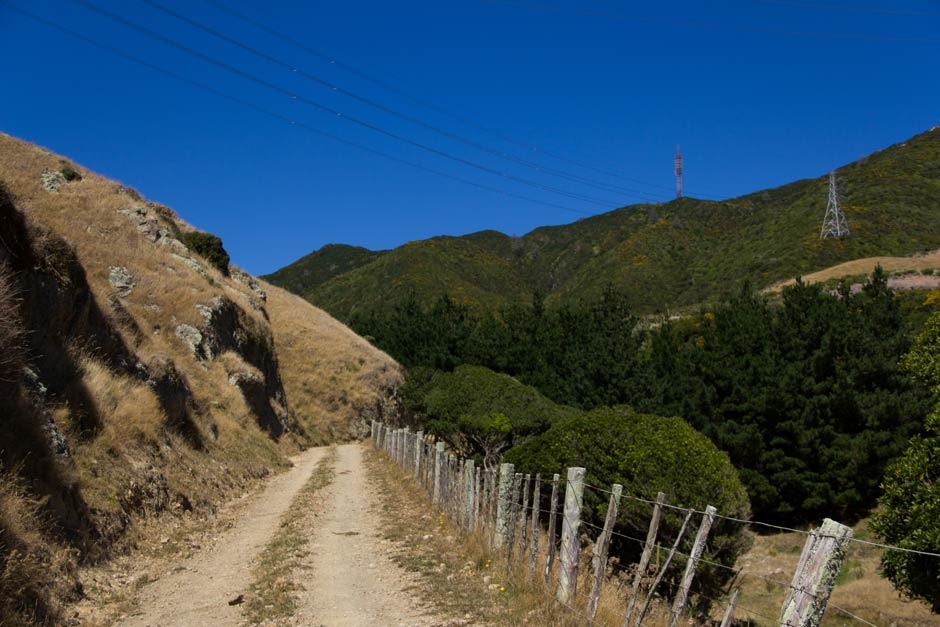
Old Coach Road, Wellington (1858)
A true colonial road
Land transport was difficult and costly in early colonial days. People walked, or if they were lucky, road on bullock carts along beaches or the sort of narrow Māori tracks found in the Ōhariu Valley, north of Wellington. The New Zealand Company had sold ‘country sections’ here in 1841 but few buyers rushed to take up their isolated purchases. The first ‘road’, steep and unformed for much of its length, followed an old Māori route. It offered little incentive to farm the steep, thickly forested slopes.
Old Coach Road was better. The name, a piece of early 20th-century romanticism, misleads because the road was really too narrow (4.2 m wide) and steep for horse-drawn vehicles. Coaches almost certainly never ran along it. Despite opposition from settlers rated to pay for it, a strike, and technical difficulties, migrant labourers carved out the road between late 1856 and September 1858. They aligned it on as winding a route as possible to make it suitable for horses. Even so, most traffic would desert it eight years later when workmen completed a third road, the longer, wagon-friendly Ohariu Valley Road.
The Johnsonville Town Board maintained Old Coach Road until the 1920s. It was never abandoned, like the first ‘road’ but, used only by the few farmers whose land it straddled, it escaped drastic change. Late 20th-century suburban sprawl at the Johnsonville end swallowed up several sections but the rest (still a legal road) forms a rare example of a barely-modified early colonial road. The 3-km section between Johnsonville and Rifle Range Road in Ōhariu Valley is now protected. It was the first road to be registered by the former Historic Places Trust.
Further information
This site is item number 22 on the History of New Zealand in 100 Places list.





Community contributions